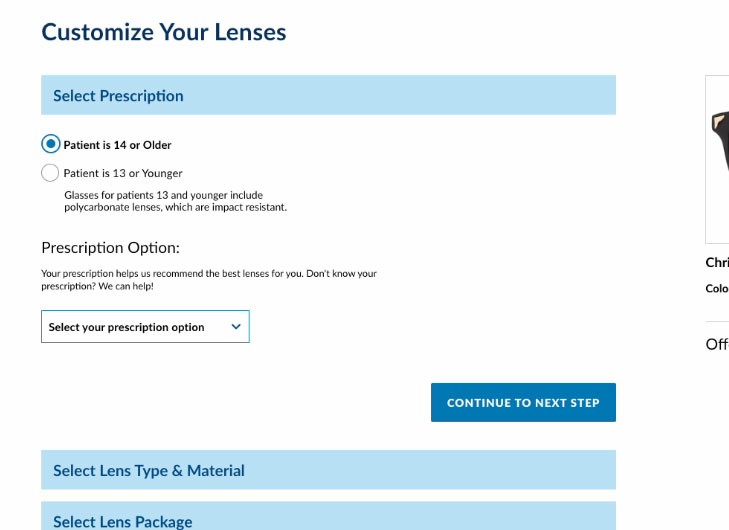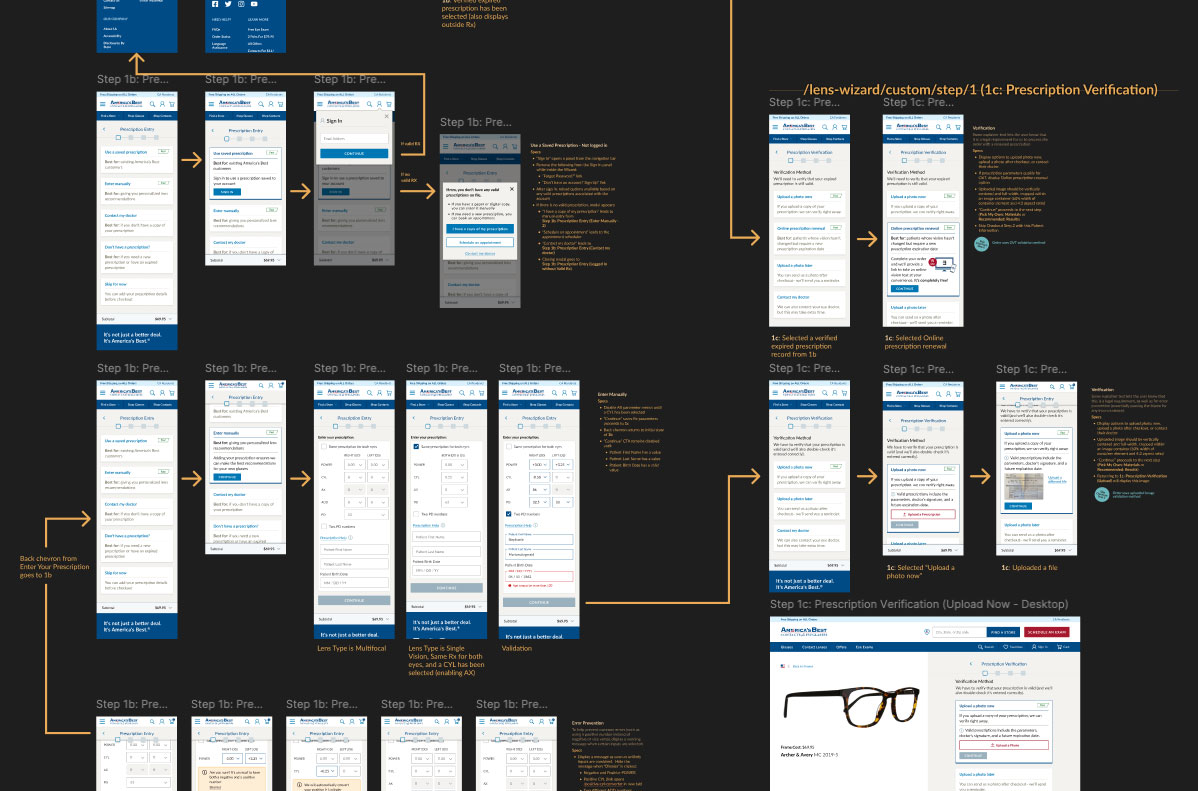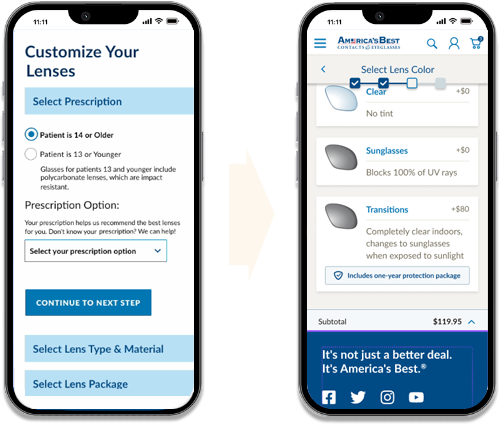I redesigned a complex eyeglass lens customizer, transforming a high-friction, error-prone flow into a simplified, high-converting product experience.
The Challenge
Buying prescription eyeglass lenses online is notoriously confusing. Customers were frequently overwhelmed by technical jargon, unclear pricing, and option combinations that often led to errors or ineligible orders. National Vision’s legacy lens configurator was rigid, difficult to maintain, and unable to support premium product expansion without increasing confusion.
The merchandising manager wanted to roll out
new pricing strategies, but the underlying
system was too brittle—developers couldn’t make updates without a major overhaul. Since the tool was
shared across multiple brands, some were even displaying outdated or incorrect pricing, creating
customer frustration and operational risk. A scalable, user-friendly solution was urgently needed to
restore trust and support future growth.
The Strategy
I led the full redesign of the lens selection wizard across multiple retail brands, using a modular UX approach to support complex dependencies between lens features, prescription entry and verification methods, and pricing rules. Working closely with merchandising, I mapped out valid product combinations, introduced intelligent restrictions, and restructured the flow to guide users through clearer, more confidence-inspiring decisions.
I also developed
key internal tools, including a
pricing source-of-truth,
logic documentation for QA and engineers, and
interactive prototypes to streamline development. Throughout the process, we prioritized
education, simplicity, and conversion while supporting
upsell opportunities.
View Related Figma Document
The Outcome
The redesigned wizard resulted in a 32% increase in average order value, driven by more premium lens selections and reduced cart friction. Fewer user errors and cancellations translated into lower customer service burden and higher order completion rates. The modular design made it easier for teams to manage, test, and expand product offerings over time.
Most importantly, the new experience made a highly technical decision process feel approachable—benefiting both customers and the business.




 back
back



